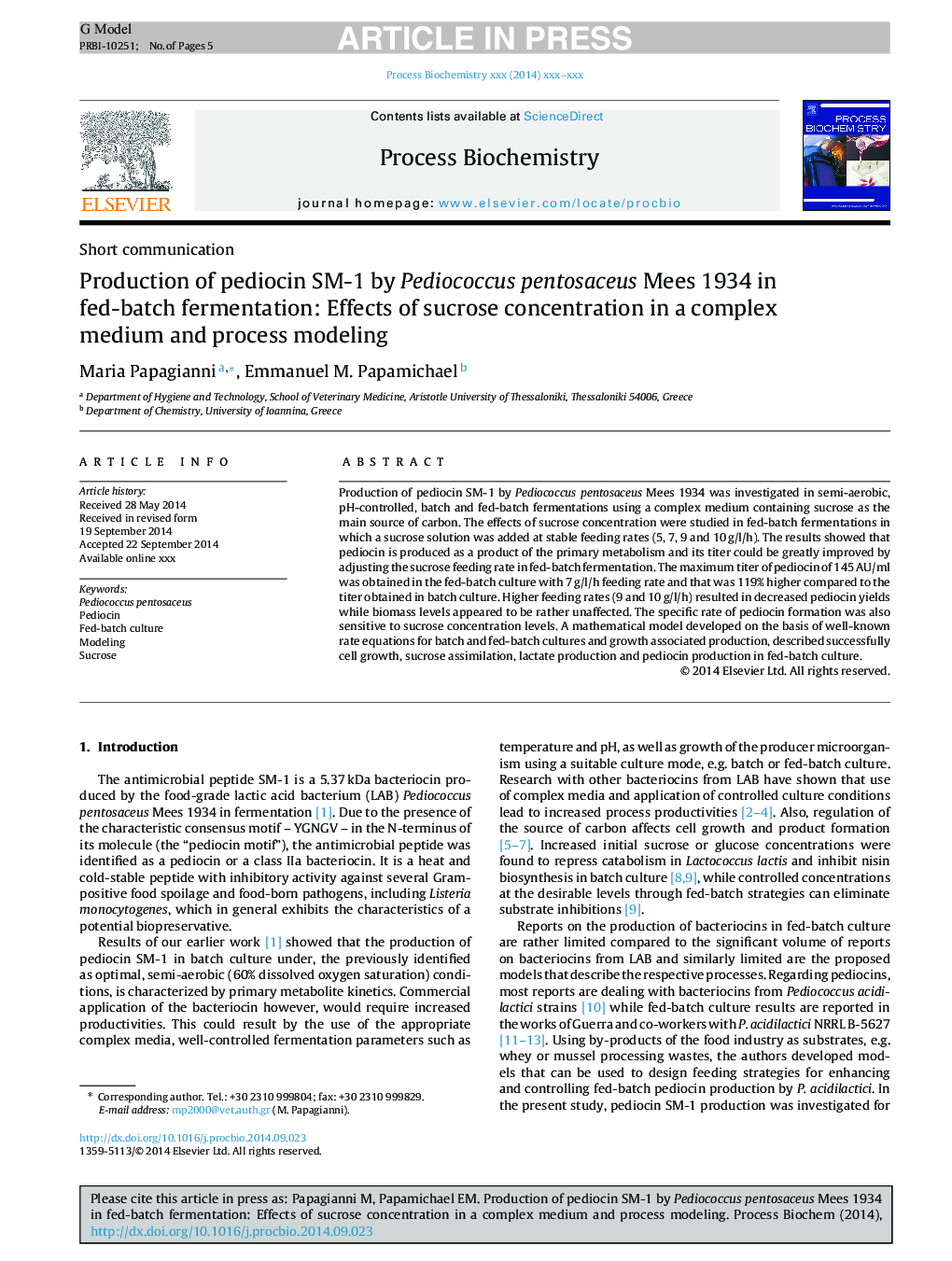| Article ID | Journal | Published Year | Pages | File Type |
|---|---|---|---|---|
| 10235277 | Process Biochemistry | 2014 | 5 Pages |
Abstract
Production of pediocin SM-1 by Pediococcus pentosaceus Mees 1934 was investigated in semi-aerobic, pH-controlled, batch and fed-batch fermentations using a complex medium containing sucrose as the main source of carbon. The effects of sucrose concentration were studied in fed-batch fermentations in which a sucrose solution was added at stable feeding rates (5, 7, 9 and 10Â g/l/h). The results showed that pediocin is produced as a product of the primary metabolism and its titer could be greatly improved by adjusting the sucrose feeding rate in fed-batch fermentation. The maximum titer of pediocin of 145Â AU/ml was obtained in the fed-batch culture with 7Â g/l/h feeding rate and that was 119% higher compared to the titer obtained in batch culture. Higher feeding rates (9 and 10Â g/l/h) resulted in decreased pediocin yields while biomass levels appeared to be rather unaffected. The specific rate of pediocin formation was also sensitive to sucrose concentration levels. A mathematical model developed on the basis of well-known rate equations for batch and fed-batch cultures and growth associated production, described successfully cell growth, sucrose assimilation, lactate production and pediocin production in fed-batch culture.
Related Topics
Physical Sciences and Engineering
Chemical Engineering
Bioengineering
Authors
Maria Papagianni, Emmanuel M. Papamichael,
